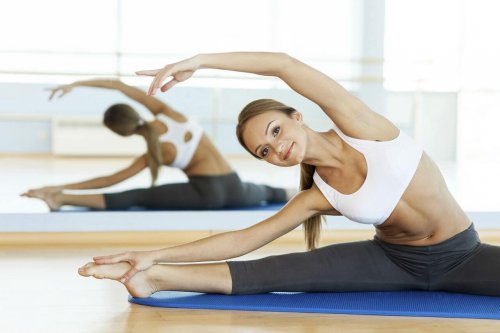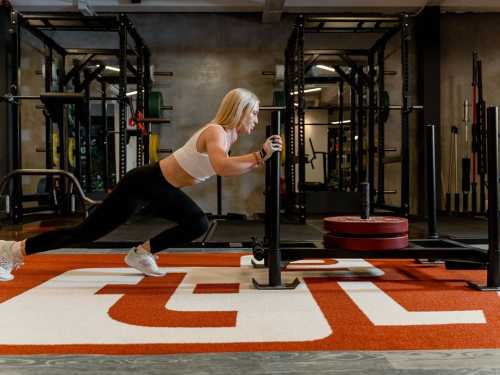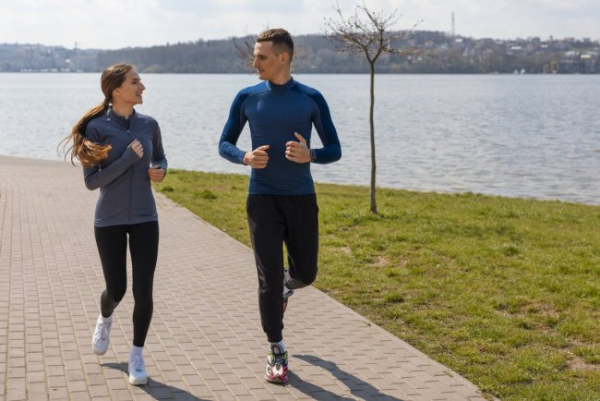
To some extent, all of us are familiar with stretching and know what and how to do it. We all faithfully repeat after the instructor at the gym the simple stretching exercises presented to us at the beginning and end of our workouts. It would seem that nothing could be simpler – two minutes before and two minutes after a workout – that's the whole point of stretching. Almost everyone knows what and how to do it, but in reality, it's not that simple. Those of us who want to do more than just exercise, but see real results, should understand a little about stretching and how to perform it effectively.
Muscle is a highly elastic tissue, capable of stretching. This is the basis of all stretching. Properly warmed-up muscles stretch very easily. However, we all have different elasticity thresholds—some higher, some lower. Some have retained excellent flexibility from their gymnastics days, while others work hard as adults to become as flexible as a reed.
I've never been a professional gymnast myself, but I've always longed to be as flexible as they are. However, after watching gymnasts stretch, I began to question the purpose and usefulness of such stretching—their stretching is based on the principle of working “at the edge of pain sensitivity” and creating micro-tears in the tissue. Nevertheless, I decided to give it a try and asked my coach to “stretch me.” It hurt, incredibly painful, unpleasant, I wanted to cry, and the next day my muscles were incredibly sore, and the pain lasted for weeks, even though, in theory, gymnasts should do this kind of stretching every day. That's the effect.
After this workout, I decided to find another way to achieve the same effect. My trainer and I began exploring new approaches and methods, and the tips you'll find here are the result of our efforts. I won't cover the exercises you should do here, as they're all fairly well-known. These could be your standard exercises you're used to doing at the gym; the question is HOW you perform them.
10 effective stretching exercises for beginners.
1. Set realistic goals based on your age and health. Before you set a goal to do the splits if you're well over 30, consider WHY you want to do it.
2. Designate one workout per week that's entirely dedicated to stretching. Or break it into two shorter sessions. Start with 20 minutes (or two 10-minute sessions) and add another 10 minutes every two weeks, eventually building up to 40 minutes (or two 20-minute sessions).
3. Before every stretching session, do some light aerobic exercise. Go for a run or do some aerobic exercise to get your heart pumping and your muscles energized.
4. Work with stretching to the point of pain – but such that you can calmly tolerate this “pain” for at least 30 seconds.
5. Before beginning your exercises, master breathing exercises. Remember that the foundation of stretching is relaxation, and muscle relaxation occurs most quickly with proper, calm breathing. Breathe deeply into your belly for a count of 4 (inhale 2 times, exhale 2 times), allowing your belly to rise and fall. Before beginning the exercises, lie quietly and breathe. Clear your mind and prepare yourself. When performing the exercises, remember the rule: “deep inhale – preparatory pose – exhale – relaxation – and assume the pose.”
6. Your workouts will resemble yoga classes, but remember our goal – we are working on stretching.
7. Let your muscles recover – do not repeat the workout until the muscle pain has passed.
8. Don’t stretch to the point of “shaking” the muscle – you risk tearing it!
9. Don't rush or rush for results. Gently advance forward just a few centimeters at a time. Your goal is to find the point where you feel slight discomfort in the muscle and try to relax. Work at this point until you feel the pose becoming easier! If you feel you can easily stretch at this level, it's time to move on!
10. Treat your body with love and gratitude for what it does for you!
These are the simple tips that finally helped me do the splits after about three months, without the excruciating pain! I still return to them periodically when I feel my muscles losing some of their elasticity.






